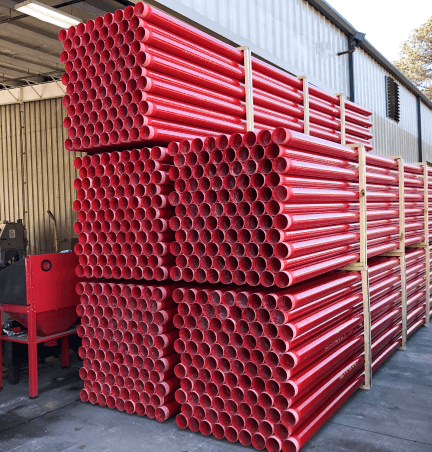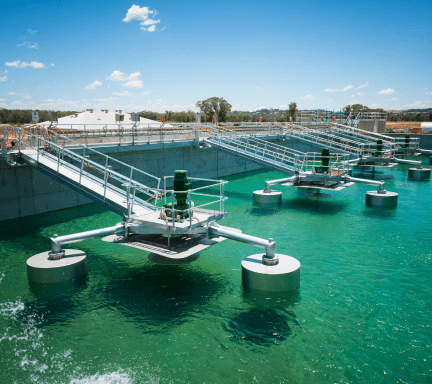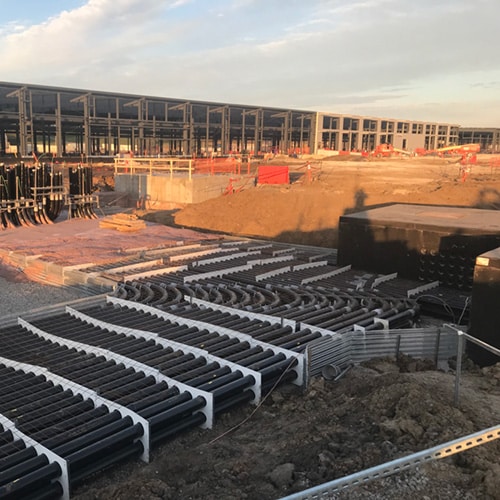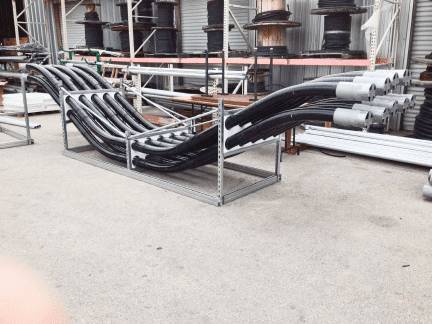By Scott Patchan
It has long been suggested that municipalities bury utilities in outdoor electrical conduit to minimize disruptions from extreme weather events, namely wind during hurricanes and wildfires. Transmission lines buried in fiberglass duct conduit could also be a solution to protect population-dense areas from wildfires in California, where exposed lines can spark dry, overgrown vegetation.
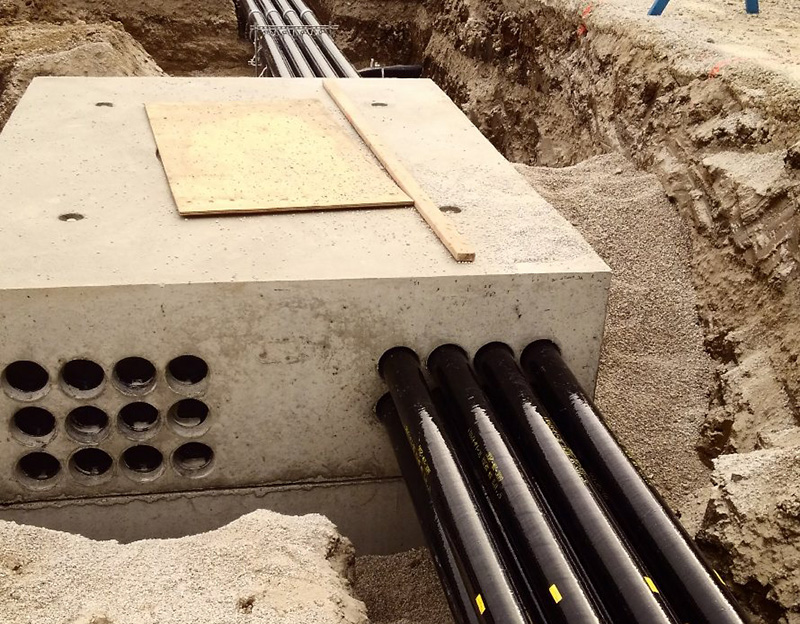
Current State
In 2024, the importance of resilient underground utilities has never been more evident. With the increasing frequency of extreme weather events—hurricanes, wildfires, and storms—municipalities and utility providers are prioritizing solutions that minimize disruptions and ensure the continuous operation of essential services like power and telecommunications.
Underground utility lines continue to gain ground across the United States. In January, the U.S. Department of Energy (DOE) announced $34 million to support 12 projects across 11 states to strengthen the country’s power grid through the development of cost-effective, high-speed, and safe underground technologies for buried utility lines.
Barriers to Entry
The cost of burying electric lines continues to be a determining factor in greenlighting these important projects, and moving them forward swiftly. Recently, the California Public Utilities Commission approved a new long-term undergrounding program that requires utilities to apply for available funding (both state and federal) to help pay for projects. The bill also requires all future cost approvals to include annual cost caps that aim to protect consumers from bearing the full brunt of the costs associated with these massive projects.
The cost of the alternative, leaving power lines above ground and vulnerable to extreme weather, may be even higher. PG&E filed for bankruptcy in 2019 after fires caused by power lines led to thousands of acres of destruction and more than 100 deaths in Northern California. Two years later the company set a goal to move 10,000 miles of power lines underground to better safeguard the communities they serve. After completion of 600 miles they were able to reduce costs from roughly $4 million per mile to below $3 million per mile.
Benefits of Undergrounding Utilities
While the initial costs are high, so are the long-term benefits. Buried utilities boast unmatched reduction in downtime. On average, improvements to utility poles and the overhead grid lead to an average of 20% fewer outages during storms, while burying power lines has been shown to reduce outages by 600%. Additionally, Florida Power and Light Co. contends that buried power lines perform 50% better than their overhead counterparts during routine operations. The utility company currently places 90% of its new distribution lines underground.
Undergrounding power lines has been proven to be safer and less disruptive than shutting off power in advance of extreme weather. PG&E asserts that the insulation of power lines is only about 65% effective at reducing wildfire risk, and significantly less effective than undergrounding.
For underground utility projects, buried fiberglass conduit provides protection from wind and other environmental conditions brought on by extreme weather. The cable runs through the electrical duct which can be encased in a concrete duct bank for additional protection.

Fiberglass conduit is an optimal choice for underground utility projects due to several key benefits:
- Fault Resistance: Fiberglass conduit is resistant to electrical faults. Should one occur inside a fiberglass conduit, the affected (faulted) cable just needs to be removed and the fiberglass conduit duct can be re-used instead of being replaced as would be necessary with traditional conduits.
- Corrosion Resistance: Fiberglass conduit offers superior protection against corrosion compared to other underground ducting products, ensuring the longevity of the infrastructure.
- Chemical Resistance: Fiberglass conduit stands up to a wide range of chemicals, making it ideal for diverse environments.
- Temperature Tolerance: With a broad operating range from -60℉ to 250℉, fiberglass conduit maintains its integrity in extreme temperatures, further safeguarding the conduit during extreme weather conditions.
- Shape Retention: Excellent shape retention ensures that the conduit remains intact even when encased in concrete, preventing damage during and after installation.
- Cable Burn-Through Resistance: Fiberglass elbows resist cable burn-through, speeding up installation and reducing the risk of damaged conduit.
- Rodent-Proof: Fiberglass conduit is resistant to rodents, offering additional protection against animals that might dig near trenches.
- Efficiency in Installation: Champion Fiberglass, a leading manufacturer, boasts the lowest NECA man-hour installation rates for conduit sized 1 1/4“ and above, making it a cost-effective choice for large-scale underground utility projects.
For municipalities and utility providers looking to safeguard their infrastructure, fiberglass conduit is a smart investment in the reliability and resilience of underground utilities.
Learn More About How Champion Fiberglass Conduit Measures Up Against Other Conduit Materials
For more information on how fiberglass duct industrial conduit has contributed to success in utility projects, visit our utilities application page.
This post was originally published on September 1, 2020 and has been updated for comprehensiveness.








